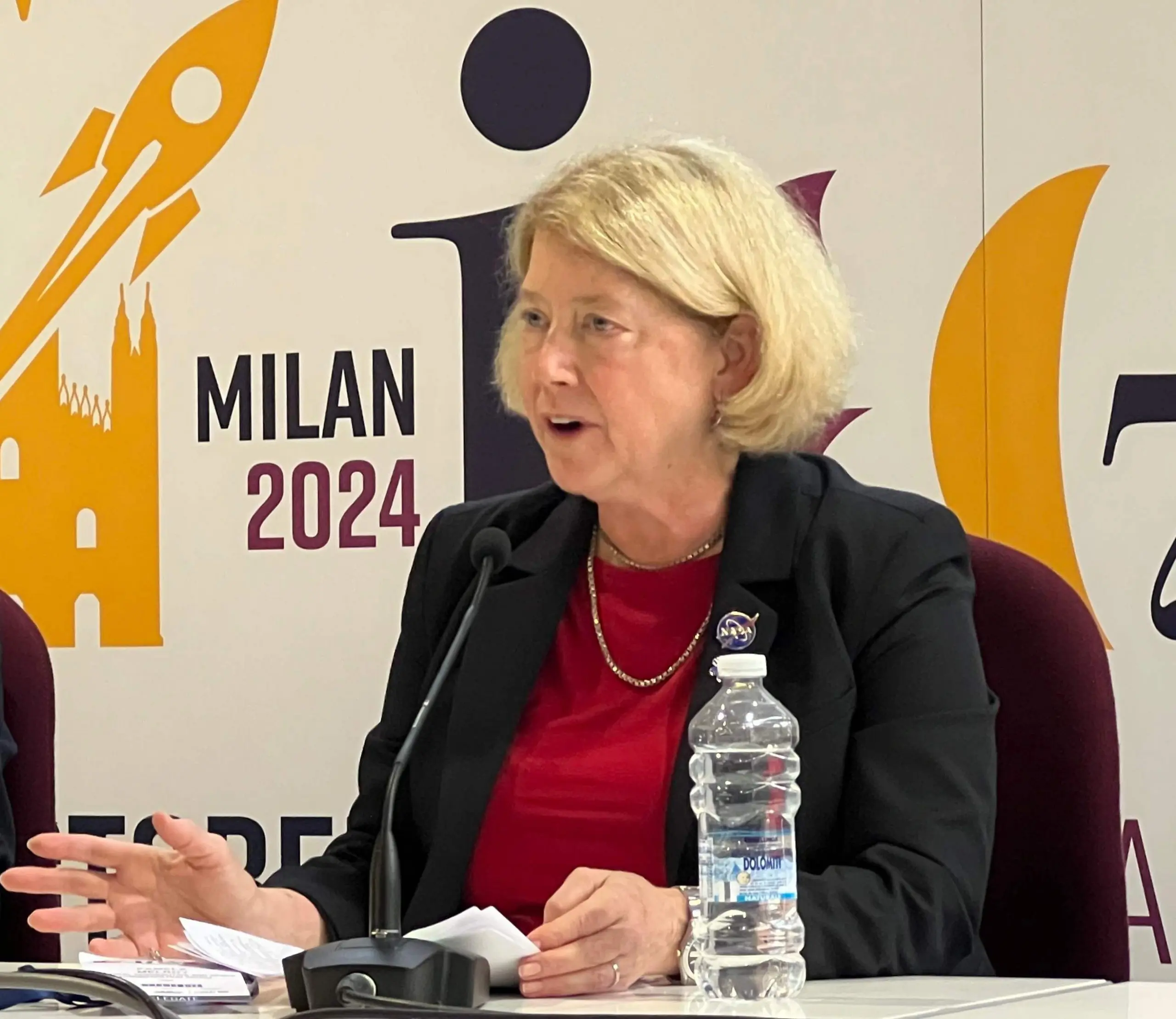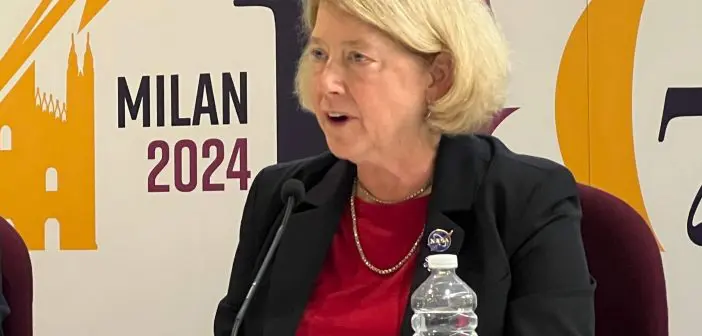
NASA’s push into outer space does not mean it is losing interest in low-Earth orbit, according to NASA Deputy Administrator Pam Melroy. She says the agency is adopting a very strategic approach to the space. This includes recently asking industry partners for feedback on newly developed goals and objectives. These will help shape ongoing human presence in low-Earth orbit.
Speaking exclusively to Australian in Space TV at the International Astronautical Congress in Milan last week, Melroy said NASA was building a portfolio of interlocking strategies that support and synergise with each other.
“We’re trying to build on many decades of operations in low-Earth orbit,” she said. “We’ve asked the question – if we are going out into the rest of the Solar System, do we need to stay in low-Earth orbit? The answer turned out to be a resounding yes.”
Melroy points to the International Space Station (ISS), positioned in low-Earth orbit, as an example of what can be achieved close to Earth. “We’ve done over 4,000 research investigations with over 100 countries on the space station,” she said. “But, like all good things, it will eventually come to an end, and we know that.
Melroy says NASA moving on from the space shuttle as an example of what will happen when they decommission the ISS. Specifically, NASA’s deputy administrator thinks commercial space stations will replace the multi-jurisdictional ISS. She says commercial partners will draw on the best parts of the ISS to create newer, more modern versions. This is similar to what commercial companies have done with contemporary space shuttles.
“The other big insight is that the (planned) trip to Mars will be in microgravity,” Melroy said. “We have to retain to skills and technology we developed (around microgravity on the ISS) to get us to Mars.”
Limitless science possibilities in low-Earth orbit
Melroy thinks the learning opportunities in low-Earth orbit are almost limitless. “You end up building on what you’ve learned and launch the next version,” she said. “We have a process in the US where the whole science community gets together and provides what’s called a decadal strategy. We’re now in our second decadal strategy, and everyone is crystal clear about what we need to learn.”
NASA’s experience in low-Earth orbit is serving as a springboard for explorations further afield. This includes the Artemis crewed missions to the Moon and, eventually, Mars – a minimum two-year round trip. “We want to do more science and that’s why we explore the Solar System,” Melroy said. “We have to go there to understand it. There are many things we can use telescopes for, but so many frequencies we can’t observe because of the Earth’s atmosphere… Like our Voyager Explorers out beyond the edge of the Solar System after 47 years, they are doing science out there you can only do in place.”
Melroy says NASA should have finalised its updated near-Earth orbit goals and objectives by the end of the year. “Our partners are helping shape our strategy going forward, and it’s important to write it down,” she said. “The world’s changing fast, and the possibilities seem endless.”





